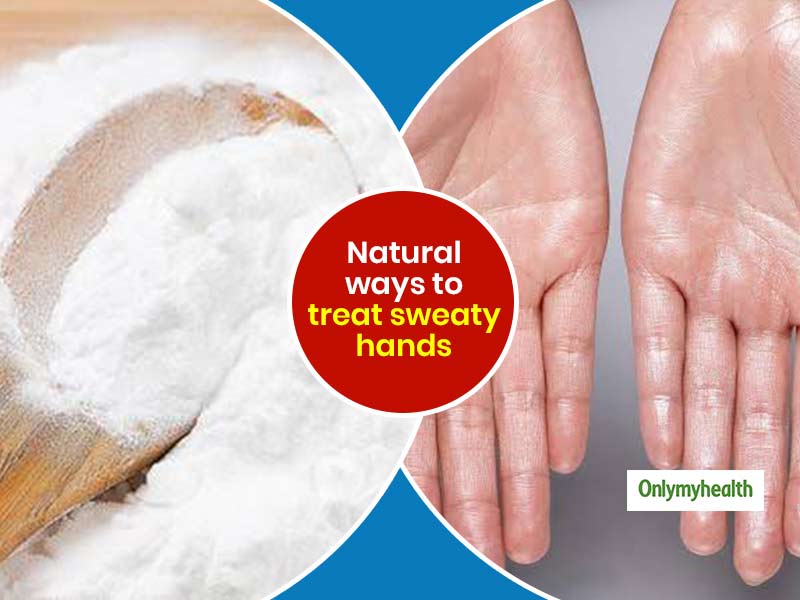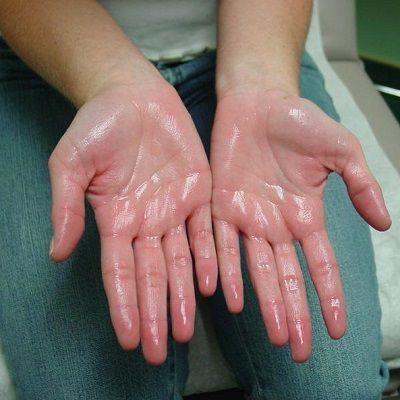Dermatology Tips and Treatments for Hyperhydrosis of Hands: Cutting-edge Solutions
Dermatology Tips and Treatments for Hyperhydrosis of Hands: Cutting-edge Solutions
Blog Article
Revealing the Intricacies of Excessive Sweating: A Comprehensive Overview to Diagnosis and Administration
Excessive sweating, medically understood as hyperhidrosis, is a condition that affects a substantial variety of people and can have an extensive effect on their lifestyle. While sweating is an all-natural bodily function, its overactivity in hyperhidrosis provides a distinct collection of challenges that frequently go past mere discomfort. Comprehending the underlying reasons, acknowledging the symptoms, and navigating the analysis process for hyperhidrosis can be complex jobs. In this detailed overview, we will certainly discover the complexities of hyperhidrosis, from its medical diagnosis to the array of treatment options offered, dropping light on efficient management methods for those facing this problem.
:max_bytes(150000):strip_icc()/the-doctor-cosmetologist-makes-injections-of-botulinum-toxin-on-the-palms-of-a-woman-against-hyperhidrosis--women-s-cosmetology--skin-care--1254089846-9a8ff2f7f5dc47f18339b3c9d138c5fd.jpg)
Comprehending Hyperhidrosis Causes
Hyperhidrosis triggers can be associated to various factors such as genes, hormone discrepancies, and particular medical problems. Genetics play a considerable role in main focal hyperhidrosis, where people acquire the problem from their household members. By determining the details elements adding to excessive sweating, health care providers can tailor therapy plans to address the underlying cause, using alleviation and improving the top quality of life for individuals impacted by hyperhidrosis.
Identifying Hyperhidrosis Effects

Additionally, hyperhidrosis signs might show up in social and psychological distress, as individuals might really feel embarrassed or nervous regarding their sweating, resulting in avoidance of social scenarios (Treatment for hyperhydrosis of hands). In addition, duplicated episodes of excessive sweating can cause skin maceration, fungal infections, and a general decrease in self-confidence
Diagnostic Process for Hyperhidrosis
Launching the diagnostic procedure for too much sweating entails complete assessment of the person's clinical history and physical exam. Inquiring concerning the beginning, duration, and activates of sweating episodes is essential to separate between key focal hyperhidrosis and additional generalised hyperhidrosis. Medical history should additionally include inquiries about drugs, clinical conditions, and family members history of hyperhidrosis.
Throughout the health examination, specific interest is paid to the locations influenced by sweating. The doctor might evaluate the level of sweating, check for indications of underlying problems, and review the effect of sweating on the person's quality of life. Furthermore, particular examinations like the gravimetric examination, starch-iodine test, or skin conductance dimensions might be conducted to measure the quantity of sweat created.
Additionally, in situations where additional hyperhidrosis is suspected, extra tests such as blood tests, urine tests, and imaging research studies may be suggested to determine the underlying reason for extreme sweating. The analysis procedure intends to properly establish the kind and reason of hyperhidrosis to lead appropriate management techniques.
Treatment Options for Hyperhidrosis
When dealing with excessive sweating, various therapy alternatives are offered to alleviate signs and symptoms and improve the link person's lifestyle. The treatment approach for hyperhidrosis relies on the extent of symptoms and the individual's action to preliminary therapies.
Topical treatments, such as aluminum-based antiperspirants, are often advised as the first line of protection for taking care of moderate cases of hyperhidrosis. These items function by plugging the sweat ducts, hence lowering the amount of sweat that reaches the skin's surface area. For people with extra serious symptoms, oral drugs like anticholinergics might be prescribed to aid decrease sweating. These drugs can have side impacts and are not suitable for everyone.

Effective Monitoring Strategies
To successfully handle hyperhidrosis, a personalized and detailed treatment plan tailored to the individual's certain needs and response to previous therapies is vital. This plan may integrate a combination of therapeutic approaches, including lifestyle alterations, topical therapies, dental drugs, botulinum contaminant shots, iontophoresis, and in serious situations, surgical interventions like gland elimination or sympathectomy. Way of living alterations such as using moisture-wicking clothes, using antiperspirants, and exercising stress-reducing techniques can match medical treatments. Topical antiperspirants consisting of aluminum chloride are typically the first-line treatment, with stronger formulations readily available for resistant instances. Dental medicines like anticholinergics may be suggested for generalised hyperhidrosis. Botulinum toxin shots are reliable for focal hyperhidrosis, giving momentary relief by obstructing the release of acetylcholine. Iontophoresis, involving making use of a low electric present to reduce gland activity, can be valuable for both palmoplantar and axillary hyperhidrosis. Surgical choices are generally reserved for serious, refractory cases and call for careful factor to consider of dangers and benefits. A multidisciplinary technique involving skin doctors, health care medical professionals, and, if needed, specialists, can optimize the management of next page hyperhidrosis.
Conclusion
In final thought, hyperhidrosis is a condition characterized by excessive sweating, which can substantially impact an individual's quality of life. With proper medical diagnosis and monitoring methods, people experiencing from hyperhidrosis can discover relief and boost their total wellness.
Too much sweating, clinically understood as hyperhidrosis, is a condition that influences a substantial number of people and can have a profound impact on their quality of life. By recognizing the certain elements contributing to too much sweating, healthcare providers can customize treatment plans to resolve the underlying cause, offering alleviation and boosting the high quality of life for individuals impacted by hyperhidrosis.
Hyperhidrosis, characterized by too much sweating find out here now beyond what is required for regulating body temperature level, can considerably influence a person's quality of life. Asking about the start, duration, and triggers of sweating episodes is vital to distinguish in between main focal hyperhidrosis and additional generalised hyperhidrosis. Treatment for hyperhydrosis of hands and feet.In conclusion, hyperhidrosis is a problem defined by excessive sweating, which can greatly impact an individual's top quality of life
Report this page